Best Thermal Rifle Scope

Which is the best thermal rifle scope on the market? Taking on this task is not easy, especially if one has to consider that suppliers and offerings differ between countries and continents, and that it’s virtually impossible to try them all and under the same conditions. The civilian market for thermal riflescopes is primarily driven by hunters and recreational shooters, and I’ve been looking at this market for over a decade. Here is my conclusion.
The definition of a thermal rifle scope
Let’s begin here: A thermal rifle scope is an advanced optical (digital) device mounted on firearms, designed to detect heat signatures and create visual images based on infrared radiation. Unlike traditional scopes that rely on visible light, thermal scopes function in complete darkness, fog, or smoke, making them ideal for low-visibility conditions. They convert heat emitted by objects, animals, or people into a digital image, often displayed in varying shades or colors to distinguish temperature differences.
Widely used in hunting, military, and law enforcement, thermal rifle scopes work in challenging environments where a normal optic (or night vision) wouldn't work at all. Thermals can be used both day and night (just look above).
Today’s most advanced sights run HD image quality with high sensitivity, large lenses, integrated laser rangefinders with ballistic software (press the button and the scope will tell the hold-over on the screen), fully customizable colors and reticles, video recording (including sound), WiFi & Bluetooth, combined with long battery times - all packed in fairly compact devices. Once you’ve tried one, it’s hard to ask for less.
How did I choose?
I am looking at uncooled thermals only, aimed at the civilian market, with the main purpose of hunting game (wild boar, hogs, etc.). While the price point has been taken into slight consideration only I set a maximum price of $10k. The image quality and overall package get a lot more substantial in my conclusion.
Remember, we’re not talking budget thermals here, but the best ones on the market. I set a thermal sensor resolution of 640x as a minimum, but the big boys are running 1024x or more nowadays. In my opinion, the difference is huge! But the resolution is not the only thing that matters. There are, and will be, a lot of great 640x options out there. You can’t mount a large turbo on your engine and expect to win the drag race; everything else needs to match as well.
One of the most important features is the NETD value. NETD, or Noise Equivalent Temperature Difference, measures a thermal imaging device's sensitivity to temperature differences. Expressed in millikelvins (mK), it indicates the smallest temperature variation the sensor can detect. Lower NETD values (e.g., 25 mK) signify higher sensitivity, producing clearer, more detailed images, especially in low-contrast environments like fog or darkness.
A lower NETD enhances the ability to distinguish subtle heat signatures, so you really want a low (and trustworthy) value here. For example, a scope with 25 mK NETD can detect finer temperature differences than one with 50 mK, improving target detection and image quality.
Here’s my list of the best thermal rifle scopes at the moment:
Pulsar Thermion 2 LRF XL60 Thermal Rifle Scope
There can be only one, and it’s the Thermion 2 LRF XL60. This is the flagship model in Pulsar’s new 60mm line, launched at SHOT Show 2025. Pulsar has been at the top of the food chain in this industry for years, with lots of new innovations, and the XL60 is no exception, with its HD image quality and integrated functionality. Having owned more than a few of the thermals on this page, and tried a lot more, I am sure that the XL60 is the best one overall. It runs a thermal sensor with a resolution of 1024x768 @ 12 µm, with virtually no thermal lag in the image ( demonstrated in this video). The sensitivity is very high, at sNETD 20 mK, so you can see details very far out.
The base magnification is 2.5x, and goes up to 20x, offering a great combination of a wide field of view, with the possibility to zoom in without getting too much pixelation. A dual battery system provides up to 10 hours of continuous operation, or if you power it via the USB-C and your power bank.
There’s a lot of data I could bore you with, but it’s the overall package with an integrated laser rangefinder and excellent ballistics software that makes the T2 XL60 a winner. It ticks all the boxes, including ergonomics, support and warranty. Pirates will also appreciate the improved eye relief. It’s made in Europe, including the sensor ( Lynred). The list price is $7,199.97 (SKU: PL76575K).
Nocpix ACE S60R Thermal Rifle Scope
Nocpix, a subsidiary of InfiRay, delivers the ACE S60R, which stands out as their most premium model. Equipped with an HD thermal sensor with an ultra-high 1280x1024 resolution, it delivers very detailed imagery. With an NETD sensitivity of ≤15mK, the S60R is excellent at detecting subtle temperature differences, even in challenging conditions like fog, rain, or humidity. Featuring a 60mm F1.0 objective lens, it offers a base magnification of 2x and up to 24x digital magnification.
The integrated 1200-meter laser rangefinder (LRF) provides fast and precise distance measurements. The innovative ocular magnifier has to be mentioned, but it only provides magnification of the 2560×2560 round AMOLED display. Availability in the US may be limited, so other models may be of interest as well. Priced around $7,999. Made in China.
Pulsar Thermion 2 LRF XP60 & XG60 Thermal Rifle Scopes
The third place is shared by Pulsar’s other two 60mm models that have 640x480 sensors, as it’s difficult to distinguish a clear winner between them. It’s more up to your hunting style, whichever will be best for you. They share all of the features of the big brother mentioned just above, the XL60.
The Thermion 2 LRF XG60, with its 4x base magnification, excels as the top choice for precision long-range shooting. It’s perfect for targeting coyotes and varmints, delivering crisp, detailed images even at its maximum 32x magnification.
For challenging weather conditions, the Thermion 2 LRF XP60 stands out with its exceptional thermal sensitivity, ideal for low-visibility environments. Boasting a 25 mK NETD, it captures the finest details, ensuring clear visuals even in humid or foggy settings. They are also easy to use in the dark. Both versions are made in Europe and priced at $5,599.97.
AGM Adder V2 LRF 60-1280 Thermal Rifle Scope
The AGM AdderV2 LRF 60-1280 uses a 1280x1024 thermal sensor and 2560x2560 display, delivering AGM's sharpest image yet. Housed in a sleek 30mm tube, it features a 1000m laser rangefinder, 2.5X base magnification, and a 60mm lens. Switchable step or 0.5X incremental zoom ensures precision. A semi-circular display mimics the feel of using a traditional scope. Standard features include a ballistic calculator, video/audio recording, 64GB storage, AGM Connect app, and 9-hour battery life via dual internal batteries and one removable 18650.
The price is $8,445. Assembly is either in the USA or in Bulgaria, and to the best of my knowledge, the core is Chinese. AGM has several other thermals in the 640x512 sensor range, both Adders and Rattlers, if this one is too much.
Trijicon REAP-IR Thermal Rifle Scope
The Trijicon REAP-IR 60mm Thermal Riflescope with Onboard DVR (model REAP-60-4) is a compact, rugged thermal optic designed for superior target acquisition in any lighting. At its core is a 640x480 thermal sensor @ 12 µm pixel pitch and 50mK thermal sensitivity, for great image quality, contrast, and detail for detecting heat signatures. The frame rate is 30 Hz or 60 Hz. The 60mm objective lens provides 3x optical base magnification, extendable to 24x combined with 8x digital zoom, and a 7° field of view for versatile long-range hunting like coyotes or hogs in low-visibility conditions. There’s also a video recorder, with a 640x480 MP4 video (30 Hz), but no sound.
Powered by two CR123 batteries for up to 4 hours of runtime. Unlike the models above, the REAP-IR features a quick-release mount for Picatinny. Thumbstick controls ensure glove-friendly operation. Priced at around $9,000-$9,500 and made in the USA. If you’re looking for military-grade durability and a more tactical look, this or any of the other “Reapers” in the same line is the way to go. The reticle pattern is MRAD, MOA, .223 BDC, .308 BDC, .300BLK BDC, to give you an idea.
N-Vision Optics HALO-XRF Thermal Rifle Scope
The HALO-XRF from N-Vision Optics represents a cutting-edge advancement in thermal imaging technology, with a BAE 640x480 @ 12 um thermal sensor, a 50 mm F1.1 Germanium objective lens and features like a built-in Laser Range Finder, onboard video recording, and WiFi connectivity.
The integrated LRF measures distances up to 1,000 yards, and two rechargeable 18650 batteries provide up to 7 hours of runtime at room temperature. The base magnification is 3.5x, and digitally up to 8x. It uses a fixed focus, which may be a drawback when you want to tweak those last fine details. The OLED 640x480, B&W only. Attachment is via Picatinny. It’s made in the USA and the MSRP is $9,495.
Armasight Contractor 640 3-12x50 Thermal Rifle Scope
The Armasight Contractor 640 3-12x50 Thermal Weapon Sight is a thermal scope, running an ArmaCORE 640x480@12um thermal, NETD 40mK, 60 Hz and a f1.0 50mm lens. The display uses an XGA 1024x768 AMOLED. Base magnification is 3.2x, with 1-4x digital zoom (hence 3-12x overall).
Key features include Wi-Fi streaming for real-time video sharing, onboard GPS and video recording, a stadiametric rangefinder for quick distance estimation, and multiple color palettes for optimized visibility. Its compact cantilever mount fits standard Picatinny rails, and the IP67-rated aluminum housing withstands recoil up to .308. With up to 7 hours of battery life from four CR123A batteries, intuitive controls, and a 1024x768 OLED display. Priced around $5,500.
Sorry if your favorite thermal is not on the list. There are plenty of Chinese suppliers that are not available in the USA, like ThermTec, PixFra and others that may be available in other markets. Other manufacturers to look for are (in no particular order, and not exclusive to): Burris Optics (USA), RIX Optics (USA), DNT Optics (Day Night Technologies, USA/China), 3EOS (Turkey), Bering Optics (USA/Russia), Hikmicro (China), ATN Corp. (USA/EU), Guide Sensmart (China), Day Night Technologies (DNT Optics) and Sightmark.
Why is the country of origin important? For some, it’s a major factor, others don’t care. With the information available, the choice is yours.
As you can imagine, it’s a jungle out there, and it’s virtually impossible to examine specifications and compare, as manufacturers never follow the same protocol.
As a customer, ask for the NETD data, and also make sure you choose a (local) supplier that knows what they’re talking about, and can show you some or all (dream on) of these options side-by-side. Every thermal will look great indoors, but on a humid night, it’s going to be a completely different thing. Don’t buy thermals online, ask for advice!
If these models are too expensive for you, perhaps you can pick one up second-hand in a few years? TFB also intends to get back with a list of more budget-friendly thermals and thermal clip-ons. There will be a lot of reasons to stay tuned.
We are committed to finding, researching, and recommending the best products. We earn commissions from purchases you make using the retail links in our product reviews. Learn more about how this works.

Ex-Arctic Ranger. Competitive practical shooter and hunter with a European focus. Always ready to increase my collection of modern semi-automatics, optics, thermals and suppressors. TCCC Certified. Occasionaly seen in a 6x6 Bug Out Vehicle, always with a big smile.
More by Eric B
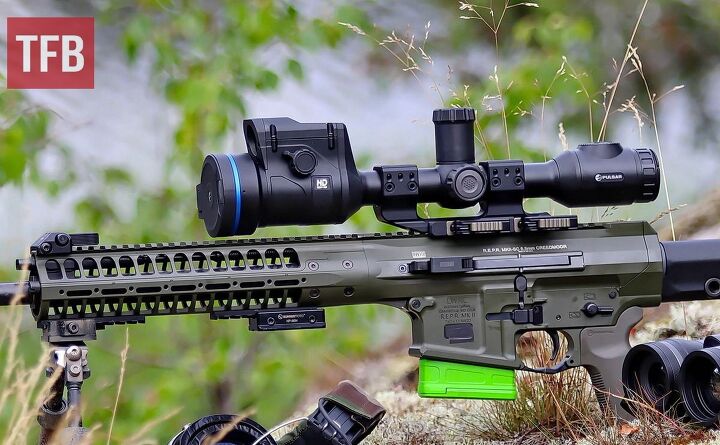







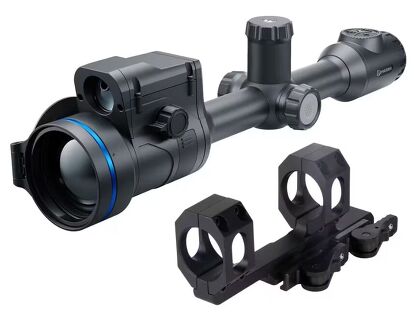

















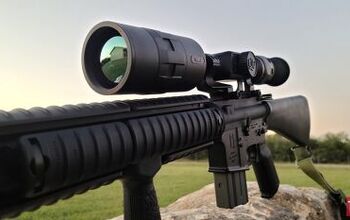
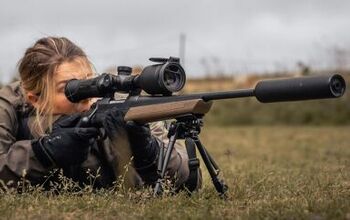
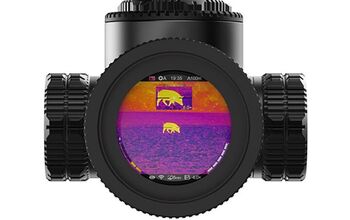
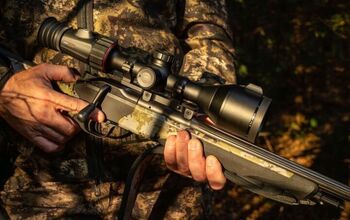
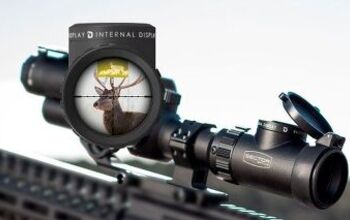
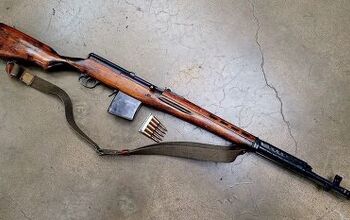

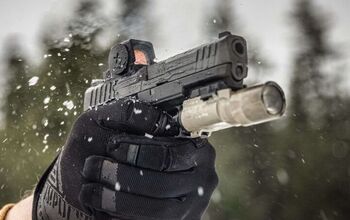
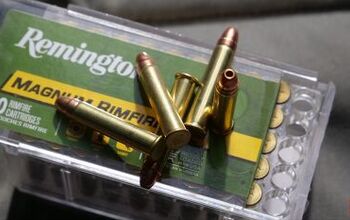
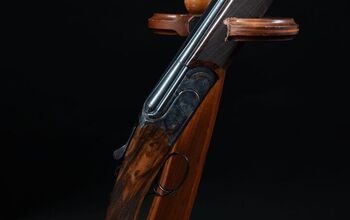

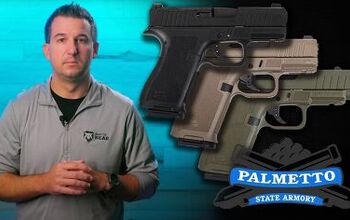

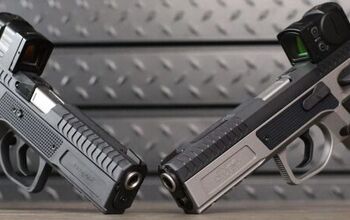

Comments
Join the conversation
You sent a working scope in for repair?
Sounds credible. 😅
I never had to send any of my Pulsars back, because they're all working. Can't say the same about some other suppliers of thermals.
All of those >640 core scopes are well over 2lbs. I'm waiting on those weights to come down a bit.